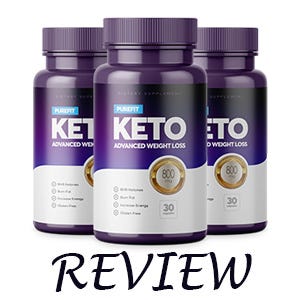Apply Now
Understanding Keto Rash: Causes and Symptoms
Keto rash, also known as prurigo pigmentosa, is a skin condition that some individuals experience while following a ketogenic diet. This condition manifests as red, itchy spots and can appear on various parts of the body. Understanding the causes and symptoms of keto rash is crucial for effective management and treatment.
Individuals pursuing a keto diet—characterized by low carbohydrate intake and high-fat consumption—may observe the onset of this rash typically when the body enters ketosis, the metabolic state where fat becomes the main energy source. The rash is often alarming, leading many to seek out keto rash photos and keto rash treatment options quickly.
Common symptoms of keto rash include red spots on the skin, itchy patches, and potential inflammation. Additionally, keto rash can cause discomfort, disrupting daily activities and overall well-being. Recognizing the skin reactions and understanding them within the context of the keto diet is essential for all dieters. By understanding keto rash causes, individuals can better prepare to manage their skin health while sticking to their dietary goals.
With this foundational knowledge established, let’s explore effective solutions for managing keto rash and its related symptoms.
Effective Treatment Options for Keto Rash
Finding an appropriate keto rash treatment can significantly impact recovery and overall comfort during the diet. Below, we outline several effective remedies and treatment strategies to handle keto rash.
Top Home Remedies for Keto Rash
Home remedies play a crucial role in alleviating symptoms of keto rash. Applying aloe vera gel can soothe and hydrate irritated skin, providing immediate relief for redness and itchiness. Additionally, oatmeal baths are known for their skin-soothing properties, helping to calm inflammation. Essential oils, such as tea tree oil, are also popular for their antibacterial and antifungal benefits.
It’s important to monitor how your skin reacts to these treatments. Keeping a record of keto rash photos before and after treatments can help gauge effectiveness and adapt strategies as necessary.
Dietary Adjustments to Prevent Keto Rash
Making dietary changes can directly impact the incidence of ketogenic diet skin reactions. Ensuring a balanced intake of essential vitamins and minerals—particularly B vitamins and omega-3 fatty acids—can help support skin health. Incorporating nutrient-dense foods helps prevent deficiencies that may contribute to skin issues.
Avoiding food sensitivities is also vital. Keep a food diary to identify any potential allergens within your keto diet. This method allows you to pinpoint foods that may trigger skin reactions, ensuring a more tailored dietary approach.
Medical Treatments for Severe Cases
In more severe cases, over-the-counter medications or prescribed topical creams may be necessary. Corticosteroids can reduce inflammation and relieve severe itchiness, helping with recovery. Consulting a healthcare professional for accurate diagnosis and treatment options is recommended for persistent conditions.
Moreover, exploring the potential of medications that address keto rash effectively requires a discussion with a medical provider. This can lead to personalized solutions based on individual skin health conditions.
The Role of Skin Care on a Keto Diet
Maintaining effective skin care is vital for those on a ketogenic diet, especially when managing keto rash. Proper skincare routines can significantly minimize the severity of skin reactions.
Essential Skin Care Tips for Keto Dieters
Implementing a consistent skincare routine helps mitigate the risk of developing skin issues. Start with gentle cleansing to avoid irritation. Choose fragrance-free products that do not strip the skin of its natural oils.
Moisturization is equally crucial. A well-hydrated skin barrier can minimize the impact of external irritants and allergens. Look for non-comedogenic moisturizers to support hydration without clogging pores.
Hygiene practices—like regularly changing bed linens and towels—also contribute to skin health. Eliminating allergens and irritants from your living environment can prevent exacerbation of skin issues.
Nutritional Supplements for Skin Health
Certain nutritional supplements can support skin health while on a keto diet. Omega-3 fatty acids, zinc, and vitamins A, D, and E are particularly beneficial for skin healing. Research shows dietary supplementation can help address keto rash symptoms and improve the resilience of skin.
Incorporating these supplements should be done mindfully, ideally with guidance from a healthcare provider. This ensures both nutritional adequacy and reduction of potential side effects.
Keto Rash Management During Stressful Periods
Stress can play a significant role in the exacerbation of various skin conditions, including keto rash. Understanding the connection between stress and skin health is vital for effective management.
Psychological Impact of Keto Rash
Keto rash may provoke anxiety and stress, leading to a cycle of skin irritation worsening with psychological distress. Stress management techniques can greatly aid in breaking this cycle.
Mindfulness practices, such as meditation and yoga, can help curb stress levels, mitigating the emotional effects of managing keto rash. Additionally, consistency in your keto diet and skincare routine provides stability, reducing anxieties regarding dietary changes.
Community Support for Keto Rash Management
Connecting with others experiencing the same challenges can provide access to invaluable emotional support. Online forums and support groups centered on keto rash and diet experiences can offer practical advice and personal stories about managing and preventing skin issues.
Sharing personal experiences and solutions fosters a supportive community environment, providing both encouragement and motivation to maintain skin health while following a ketogenic lifestyle.
Keto Rash FAQ: Common Queries
One essential aspect of managing keto rash involves addressing common questions that dieters may have.
What are the First Signs of Keto Rash?
The initial signs of keto rash typically include small red spots or patches on the skin, often accompanied by intense itching. These symptoms may first appear on the torso, back, or can spread to the arms and legs.
How Long Does Keto Rash Take to Heal?
The recovery time for keto rash varies among individuals. After initiating appropriate treatment strategies, many people see improvements within one to three weeks. Persistent or severe cases may require medical evaluation for tailored treatment plans.
Is Keto Rash Harmful?
Keto rash itself is not inherently harmful but can lead to discomfort. Monitoring skin reactions closely and addressing them promptly can prevent worsening conditions. Consultation with a dermatologist may provide additional insights especially if symptoms persist.
Conclusion: Managing and Preventing Keto Rash
In conclusion, managing keto rash requires a comprehensive approach that combines dietary consideration, skincare routines, home remedies, and medical interventions when necessary. By understanding the causes and implementing effective solutions, individuals can significantly reduce the impact of keto rash on their lifestyle. Integrating community experiences and professional advice enhances the overall management and prevention strategies surrounding this condition.




